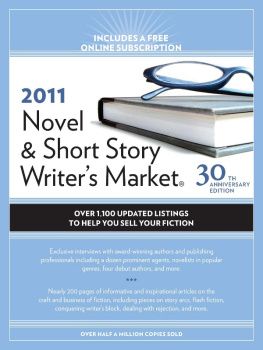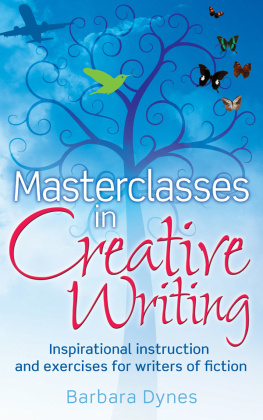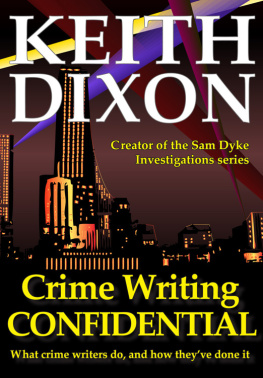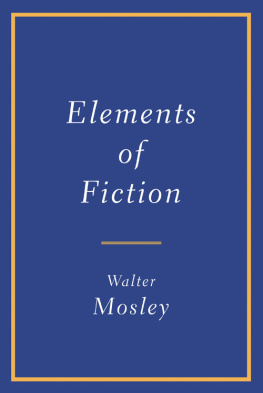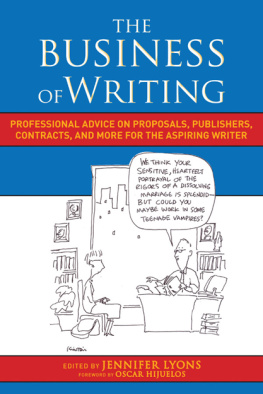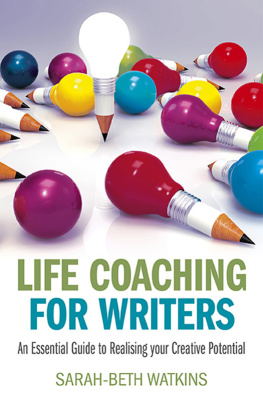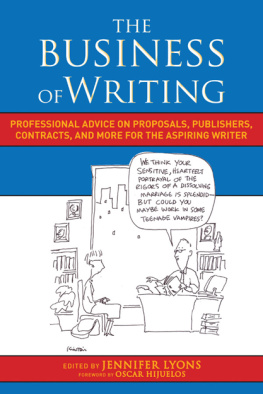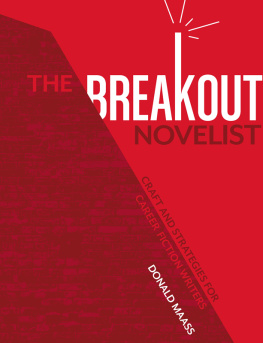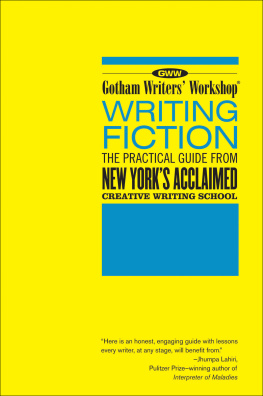Table of Contents

KISSING
THE
DEMON
The Creative Writers Handbook
AMRITA KUMAR

HarperCollins Publishers India
CONTENTS
Most of the people Ive known who wanted to become writers, knowing what it meant, did become writers. About all that is required is that the would-be writer understand clearly what it is that he wants to become and what he must do to become it.
John Gardner, The Art of Fiction
A mong all the miseries heaped upon my generation was a fat squat book with a shiny red faux leather cover titled High School English Grammar and Composition. It was the stuff of nightmares and it was authored by two men, Wren and Martin, who for some inexplicable reason I imagined as Laurel and Hardy with bowler hats and walking sticks. These two worthies were responsible for my growing up with a dislike for rules. Many years later, the writer in me continues to avoid rules but the editor in me has developed a sneaky admiration for those two men. Just like one of my daughters has for meshe recently presented me with a pop art coaster of a girl with raised eyebrows exclaiming: Oh my god! My mother was right about everything!
Theres a funny thing about rules. You force them on people in a high-handed manner and you can be sure they will spend their lives breaking them with a vengeance, to their own detriment sometimes. Now after four decades in book publishing, I cant help dividing the writers I read into two groups: those who have suffered Wren and Martin (or the likes of them) and those who havent. The first two or three paragraphs of anybodys writing are enough to tell me which group he or she belongs to. Ironically, if its the former, I heave a sigh of relief because it makes my task of editing so much easier.
Writing is, however, quite apart from editingthe rules of the game are so differentand my sigh of relief shouldnt indicate that I think only the former can be writers. Nor do Wren and Martin pose a threat to you today. The only reason Ive mentioned them, and mentioned my own opinion of rules, is to put across to you that Kissing the Demon is not designed to put your creative nose out of joint, only to turn it gently in a certain direction.
Ive based the title of the book on what George Orwell said about writing being a horrible, exhausting experience for him, like a long bout of some painful illness, and that he wouldnt have written a single book were he not driven by some demon that he could neither resist nor understand. I hope this book will make your journey as a writer a little less painful, make you look upon the demon with a little more love. At the very least, it should make you a better reader by opening your eyes to the creative process, and an enhanced reading experience can be rewarding in so many ways. To quote James Wood, author of How Fiction Works: Literature makes us better noticers of life; we get to practise on life itself; which in turn makes us better readers of detail in literature; which in turn makes us better readers of life.
Kissing the Demon would help book reviewers too. Just as a writer needs to get out of the way of his story, so does the reviewer need to get past personal opinion. I am often bewildered by reviewers who comment that such-and-such book is too dark and complex or too light and superficial. Such a verdict makes no sense if that is precisely what the writer intended or thats the genre hes writing in. The reviewer needs to understand the scope of narrative elements and all it takes to write a book before unthinkingly trashing a writers years and years of hard work.
You can use this book in two ways: either before or after youve written something. If you feel too much advice might interfere with the flow of your thoughts, avoid reading it till you have a first draft ready. So when you go through it, you will recognize your mistakes and you can rectify them in your second draft. Its also designed to allow you to skip parts you dont want to read at a certain point but may want to return to later.
Though Kissing the Demon is addressed primarily to the fiction writer and the illustrative examples within are drawn mostly from fiction, the writer of narrative non-fiction (biography, autobiography, literary journalism, travel writing) would benefit too. Literary devices are not ends in themselvesthey are a way of seeing. It was in 1966 that Truman Capote coined the term non-fiction novel to describe his In Cold Blood. The increasing tendency for non-fiction to follow the narrative arc of a novel is evident in Katherine Boos Behind the Beautiful Forevers, Suketu Mehtas Maximum City, Pico Iyers Sun after Dark and Basharat Peers Curfewed Night. Validating the merging of the two streams was the awarding of the 2015 Nobel Prize for literature for the first time in half a century to a non-fiction writer, Svetlana Alexievich. In her book on the rise and fall of the Soviet Union, she blends research with the texture, drama and emotional punch of a novel masterfully, her ports of call very similar to those of fiction, in which the writer plays a role much larger than that of the objective observer.
We see a similar merging of boundaries in the world of cinema. The documentary film Amy made on singer Amy Winehouse by Asif Kapadia employs certain feature film techniques. The exploitation of Amy, her descent into addiction and her death at the age of twenty-seven could have been the stuff of a hackneyed portrait of yet another talented junkie. Instead, Kapadia delivers a telling image of a woman who is funny, sharp, brash, as crude as she is elegant and not in the least bit fragile, at least not initially. Like her music, she emerges as both ordinary and special. This film carries a great lesson in characterization for writers of both fiction and non-fiction.
Kissing the Demon is based on the premise that writers are born and made, that talent can be innate and developed. Today, few would argue with this theory, unlike yesteryear, when people believed writing to be a mystical act, to be indulged in by the genius alone. Over the last decade this myth has blown, the veil has lifted. This doesnt mean Im in favour of spreading the art thin to the level of mediocrity but neither does the recent proliferation of writers in India necessarily indicate an intellectual decline. If the number of books being written has skyrocketed, so has the number of books being rejected. And those rejected have most often been written by someone who couldnt be bothered with rules. Contempt of technique, an arrogant attitude, doesnt pay.
While its true that depth of vision and originality cannot be taught, craft can, and an understanding of craft could in turn spur you to develop a vision and a voice of your own. To stretch the argument a bit, I would even say that writers like Charles Dickens and Fyodor Dostoevsky could have benefited from a couple of raps on their knuckles. One of the reasons people got away without learning earlier was that so few were writing; today millions are, making it all the more important to learn if you want to stand out from the crowd rather than end up in a publishers slush pile.
Yes, competition has intensified, yet writers today are luckier than their predecessors of a generation or two ago who had to grapple with accusations of being Macaulays bastards and other such insults flung at the post-colonial Indian-English writer. Today, writing in Hinglish is perfectly legitimate; words like chapatti and kurta-pyjama neednt be italicized; dialogue can be penned just the way it is spoken in India and not the way the British told us to do it. The number of English-es available to us is astounding, and this can be seen as both delightful and disturbing depending on how much of a purist one is.


